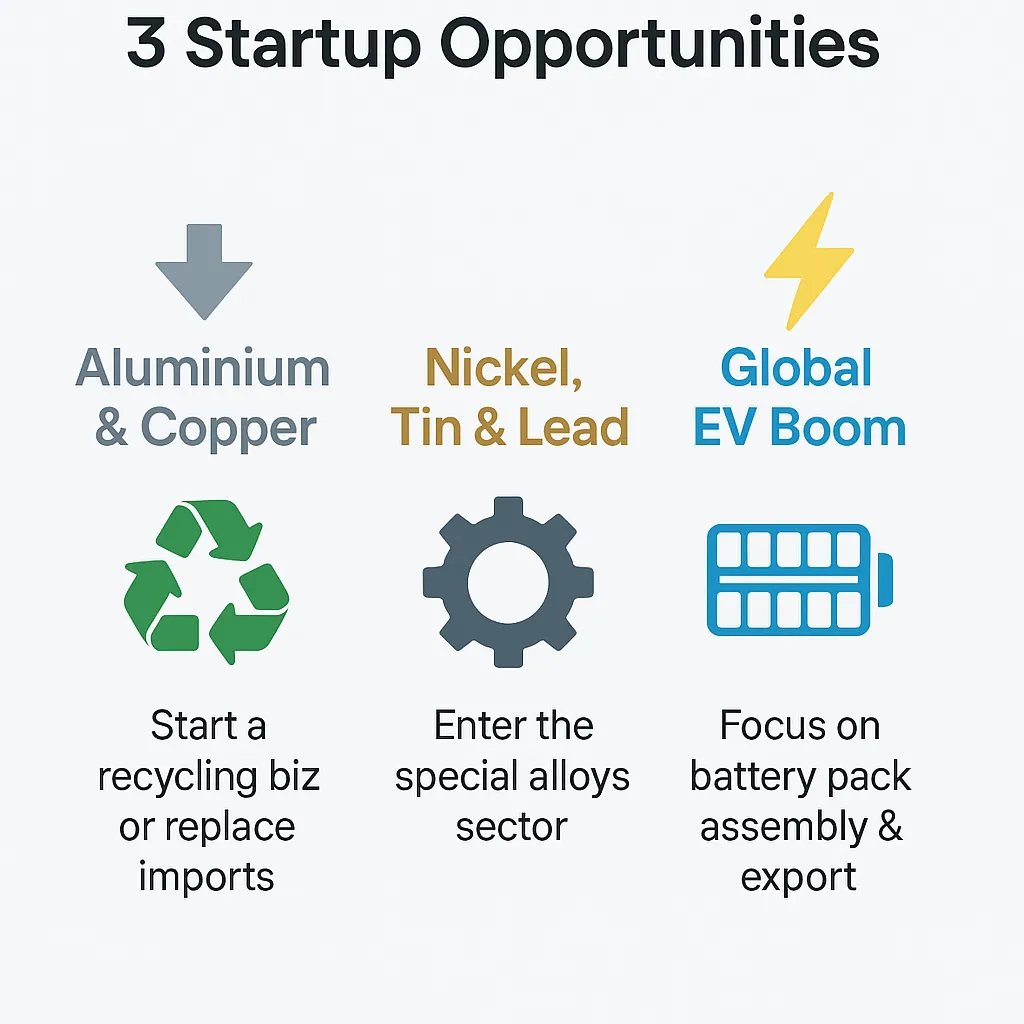Exports from India now have a position to take advantage of unprecedented opportunities (export opportunities). The government set an unprecedented goal – by 2030 exports of 2 trillion USD.
This goal includes 1 trillion USD in service and 1 trillion USD in goods (goods). By 2030, the export of engineering is expected to be $ 250 billion as part of this screening.
Startups consider this target differently. That’s much more than a number now. Indian entrepreneurs have the penetration of new industries, creating unique offers and export concentrations, an unprecedented opportunity to expand global enterprises.
This has been decades for startups to think that global directly from the foundation and impaired India as their only market.
Read Our Project Report: Click Here
The importance of exports to the growth of India
In terms of exporting, India gains the benefits of creating employment in new industries, new industries and logistics divisions. Then companies are motivated to increase their standards so that they can play at the same level with international competitors.
In accordance with the global reputation of India, it improves its image as a supplier for the rest of the world. Supplied with a wide international market ensure that startups are expanding and repaying to satisfy the increased demand on the global market.
India Export in FY 2024-25 was $ 437.42 billion. Of which, $ 116.86 billion contributed engineering exports. It is currently an export of engineering, which is $ 116.67 billion, 26.67 percent of goods exports, and this share is expected to grow at a rapid pace.
Key driving forces of growth of Indian ambitions for export growth
Some strong catalysts drive India towards the 2030 export target.
- Political pressure/ support: Initiatives such as Make in India, PLI schemes and Brand India campaign are strengthened by exporters.
- Diversified export basket: India now exports not only raw materials, but also finished and highly valuable goods.
- Global supplier chain overwork: countries that need to replace China create opportunities for India.
- Demand for technology and sustainability: new demand for electric vehicles, renewable energy sources and digitization.
- Trade agreements: FTA with Great Britain, SAE, Australia and the EU provide easier access to the market.
- Read More: Trade Challenges 2025: India’s Steel Industry Faces U.S. Export Barriers
Engineering exports: heart growth of India
Engineering is the most visible product in India. In FY 2024-25, engineering exports increased by 6.74% to $ 116.67 billion. India has set an ambitious goal of doubled this number by 2030 at $ 250 billion.
Startups can get into this event by supplying engineering components, entering high-tech niches such as instrumentation aviation or medicine, and proven in more than 150 export destinations.
Start-up Highpounterion Sectors in 2030
Start-ups can focus on these high growth sectors:
Astronautic & Space Equipment: Export increased by 114.7% in one year. Start-ups can supply avionics, composites and satellite parts.
Electric vehicles and parts: The export of cars has already undergone a brand of one billion US dollars. Start-ups can produce EV scooters, lithium-ion batteries, charging devices.
Renewable energy equipment: Export of electric machines increased by 16.2% to $ 14.3 billion. There are opportunities for the production of solar cells, parts of wind generators and hydrogen control systems.
Medical equipment and tools: Export has reached $ 2.8 billion. Start-ups can develop diagnostic sets, wearable or biological manipulators.
Agro-Machinery & Pumps: Export of industrial machines was $ 8.3 billion. Start-ups can produce modular agro-machines and irrigation pumps.
Nue metal and recycling: tin exports, nickel and lead. Start-ups could focus on recycling and alloys.
Startup designs

- Decreasing exports of aluminum and copper: with decreasing exports in aluminum and copper there are opportunities for recycling and replacing imports.
- The export of nickel, tin and lead increases: the special alloys and advanced production industries represent a lot of opportunities.
- Global demand for the battery EV: Companies that perform battery and export set will have the future.
Lessons in success from Indian business leaders
Indian entrepreneurs can learn from others who have managed to expand their companies abroad.
Ratan Tata (Tata Group): Created affordable global brands.
Anand Mahindra (Mahindra Group): He soon got aircraft and electric cars.
Baba Kalyani (Bharat Forge): From the release of the provider of global defense systems.
These cases illustrate how early visualization, innovation and scale can lead to global success.
Read Our Book: Click Here
Plan for Export 2030: Recommendations for Startups
- Identify a specialized sector: focus on aviation, electric vehicles, renewable energy, medical devices and waste recycling.
- Follow Global Standards: Get CE and ISO certified. Buy FDA for contracts.
- Use business agreements: Use Indian FTA with other nations.
- Invest in technologies and green procedures: intelligent and ecological solutions.
- Working with ecosystem partners: growth with export advice, industrial clusters and NPCs.
- Read More: Export and Import Dynamics of India’s Chemical Sector
As NPCs can help you
Niir Project Consultancy Services (NPCS) helps to develop businesses prepared for export for new owners of businesses and startups. We write market surveys and news to understand that the product will be produced, the raw materials to be used, and the machines that will be needed.
We also provide simulation for investment forecasts, market research, expected demand, nesting competition and other necessary data to facilitate business decisions.
NPCS reduces your risk, saves you time, maximizes your clarity and benefits you for every business decision. Your business is maintained and profitable, whether aviation, electric vehicles, renewable sources, medical or any recycling business.
Find the Best Idea for Yourself With our Startup Selector Tool
Export Opportunities: Conclusion
The aim of India to reach 2 trillion USD to export by 2030 is a remarkable opportunity for growth – especially for startups that are trying to scale.
It is estimated that the engineering sector itself exceeds $ 250 billion and the emergence of new areas such as EV, Aerospace and Medical Re equipment, promises new opportunities.
Startups that want to expand to the international market, adopting advanced technologies, and the use of government support can achieve the status of a global leader. With the help of NPCs, the upcoming decade can be transformation in terms of global recognition of these entrepreneurs.
FAQS
1. What is the export target of India for 2030?
The aim of India is to achieve a total export of 2 trillion USD by 2030, with 1 trillion USD from services and 1 trillion USD from goods, including $ 250 billion from utilities.
2. Which industry offers high growth potential for startups?
Startups can focus on air and space equipment, electric vehicles and components, equipment for renewable energy sources, medical devices and tools, agro-machines and pumps and impartial metals and recycling.
3. How can startups benefit from government policies?
Initiatives such as Make in India, PLI schemes, Brand India and FTA campaigns provide financial support, easier access to the market and incentives for worldwide scaling.
4. How do NPC support startups in export companies?
NPCS provides market surveys, DPRS, feasibility studies, machine and raw material planning, financial projection and investment simulations that help startups to take informed and profitable decisions.
5. Why is engineering exports a key opportunity for startups?
Engineering exports contribute more than 26% of Indian exports of goods and growing demand in EV, air space, renewable energy and medical devices create lucrative, global competitive opportunities.


























